 I love the arrival of daffodils in my garden. They signify the start of spring and their blanket of yellow is like a wash of sunshine after a dreary winter.
I love the arrival of daffodils in my garden. They signify the start of spring and their blanket of yellow is like a wash of sunshine after a dreary winter.
It saddens me when they begin to fade and I look forward to their return the following year. This season I vowed to pay special attention to my daffs, in the hope they would repay me with an even more impressive display next year. I diligently deadheaded them by pinching off the withered flowers and seed pods, which redirects energy back into the bulb rather than into seed production.
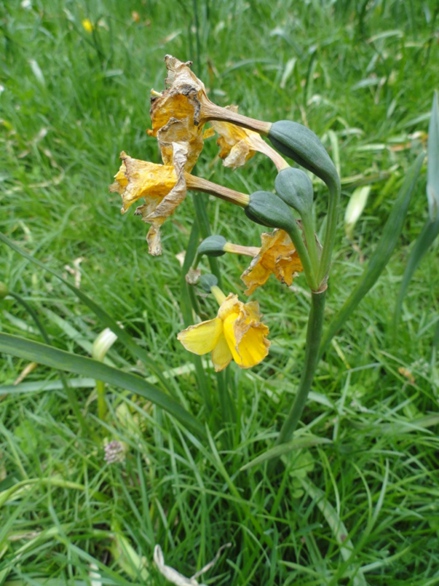
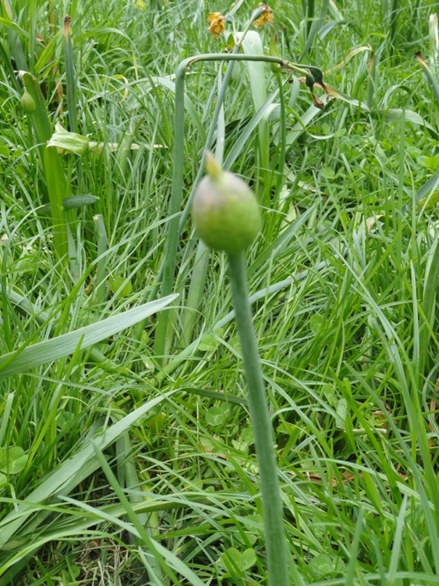
Then I left the leaves in place allowing photosynthesis to continue; charging the bulb with even more energy. However over the past few weeks, whilst wandering around my neighbourhood, I noticed many of the unruly leaves had been ‘tidied up’ into neat knots. Eventually only mine remained in a tangled mess and I begin to feel that I was letting down the area. 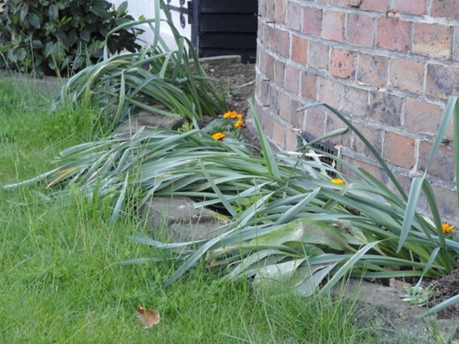
In a vain attempt at ‘keeping up with Joneses’ I promptly set about neatening my borders. I carefully separated the matted leaves; twisting and folding them into neat bunches. Then using some loose ends I secured the knots; rather like styling a pony tail. My clusters may not have been as well-ordered as the neighbours’ but still I was rather pleased with the result.
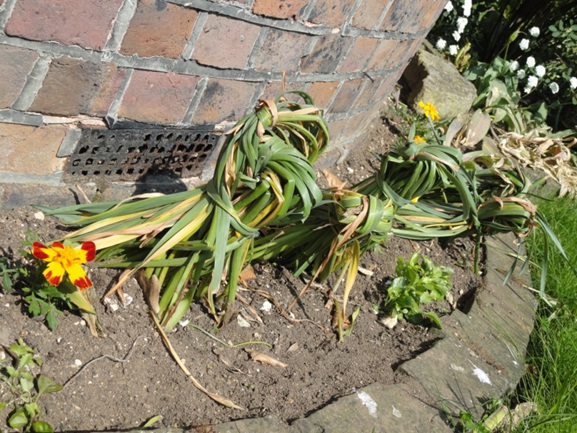
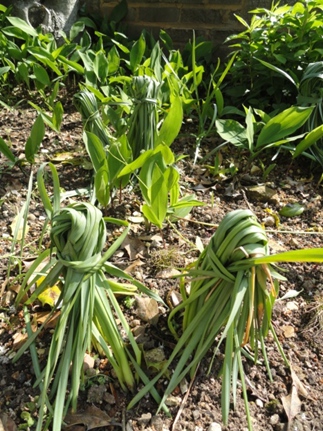
Feeling rather smug I went indoors to peruse the RHS website… only to discover they do not recommend this knotting of daffodils! Apparently it hinders their ability to function and as a result can cause ‘Daffodil Blindness’ – a condition where the foliage grows but the flowers fail to form. Instead it is advised that the leaves are left loose for around 6 weeks until they turn yellow; at which point they may be removed.
My vanity had got the better of me and I have probably done more harm than good. However a lesson has been learned, and in future I will do my research first before ‘blindly’ copying others.
– Charlotte